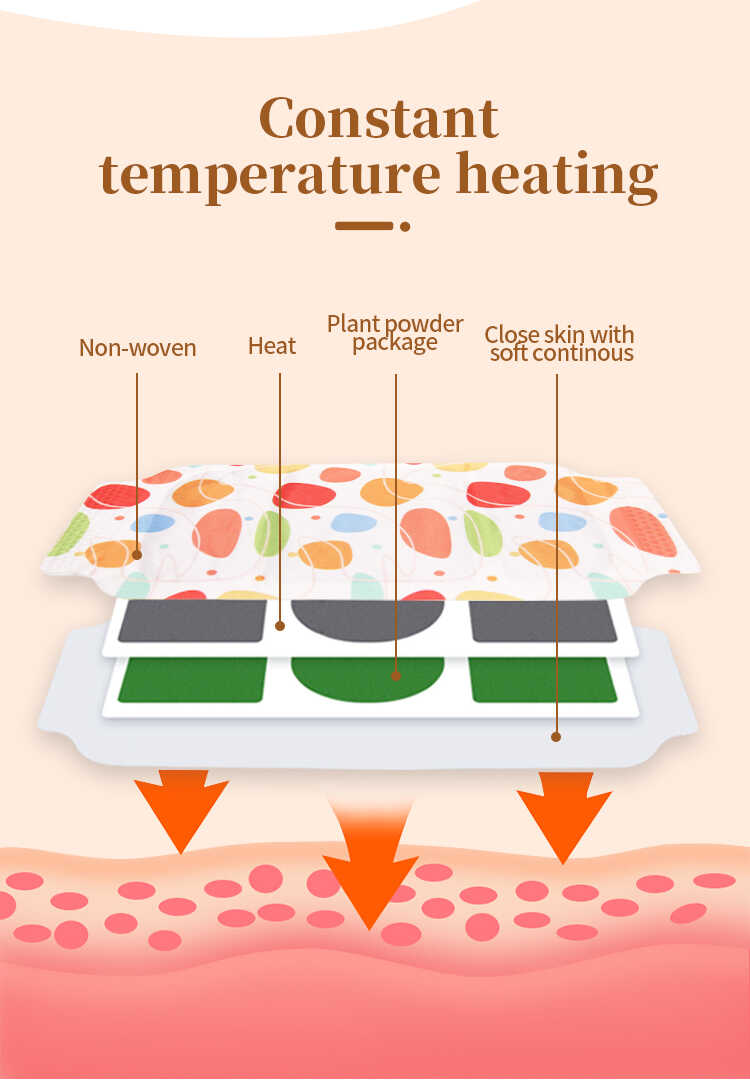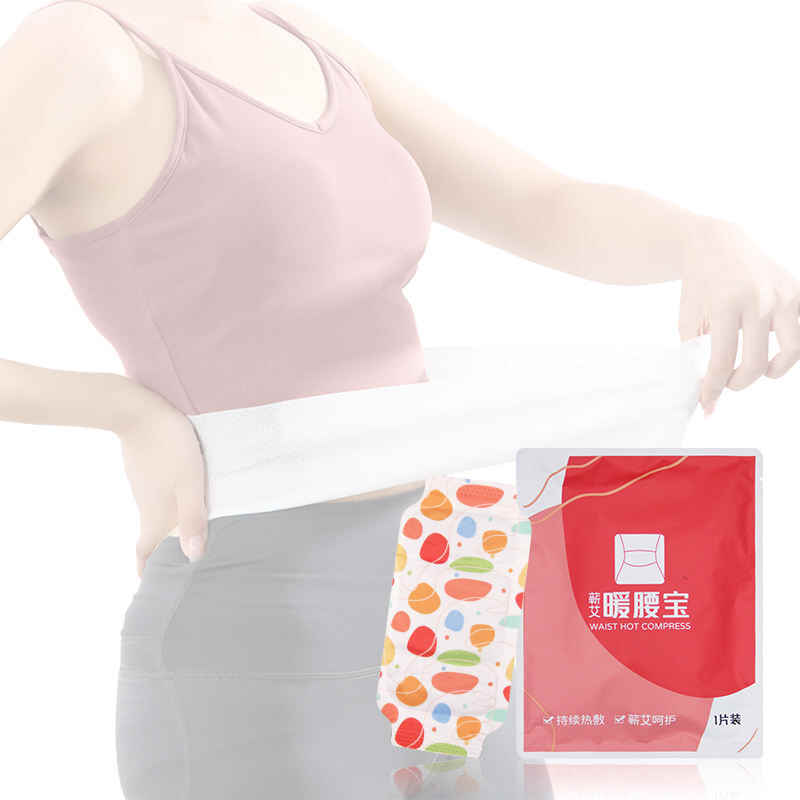From Concept to Market: How OEM Services Streamline Waist Heat Patch Product Development
In today’s fast-growing wellness industry, brands are increasingly turning to Waist Heat Patches as a highly marketable solution for pain relief, warmth therapy, and daily comfort. However, developing a high-quality heat patch product from scratch can be complex, time-consuming, and costly without expert support. This is where partnering with a professional Waist Heat Patches OEM becomes essential.
OEM (Original Equipment Manufacturer) services help brands move seamlessly from idea to finished product, offering technical expertise, regulatory guidance, cost efficiency, and faster time-to-market. Whether you're planning to launch Custom Waist Heat Patches, develop a new product line, or expand through Private Label Waist Heat Patches, understanding the OEM development process will help you create a competitive, compliant, and consumer-trusted product.
This article provides a comprehensive overview of how OEM services streamline waist heat patch development—from concept planning to mass production and market launch.

1. Understanding the Role of OEM in Waist Heat Patch Development
OEM services play a central role in transforming a concept into a market-ready product. A qualified Waist Heat Patches Manufacturer handles the research, formulation, testing, regulatory compliance, and production that brands cannot easily manage on their own.
Key functions of a Waist Heat Patches OEM include:
Technical R&D and formulation development
Material sourcing and heat technology design
Product safety and temperature performance testing
Packaging and branding customization
Mass production and quality control
Regulatory guidance and export support
Partnering with a reliable Waist Heat Patches Supplier allows brands to focus on marketing and business growth while benefiting from the manufacturer’s expertise and infrastructure.
2. From Idea to Product: The OEM Development Stages Explained
Developing Custom Waist Heat Patches through an OEM partner typically follows a structured, efficient, and professionally managed process. This helps brands reduce risk, avoid delays, and ensure product consistency.
Below is a step-by-step breakdown.
Stage 1: Product Concept & Market Positioning
The brand begins by defining the product vision:
Target users (office workers, elderly consumers, fitness users, women with menstrual discomfort, etc.)
Product type (self-heating patch, herbal heat patch, medical-grade heat patch)
Desired features (duration, temperature level, scent, materials)
Design and packaging preferences
Competitive positioning in your market
A good Waist Heat Patches Manufacturer will analyze your ideas and suggest practical, market-ready solutions.
Example Questions OEM Helps You Answer:
What heating duration is ideal for your customer base?
Should the product focus on pain relief, wellness, or lifestyle comfort?
What adhesive material best suits your target demographic?
How can your product stand out among competitors?
Stage 2: Formulation R&D and Material Selection
Once the concept is defined, the Waist Heat Patches OEM begins technical development.
Typical R&D tasks include:
Designing the heating formula (iron powder, charcoal, salt, minerals, herbal compounds)
Controlling temperature release curves
Ensuring safe and consistent heat levels
Testing adhesive strength and fabric breathability
Selecting suitable materials for skin contact
For Custom Waist Heat Patches, OEMs can create:
Mild-heat or high-heat versions
Long-lasting patches (8–12 hours)
Herbal-infused or aromatherapy heat patches
Eco-friendly, biodegradable versions
OEM R&D ensures you achieve a unique product that fits your brand identity and customer expectations.
Stage 3: Prototyping & Sample Development
With the formula and materials defined, the next step is creating product samples.
A professional OEM will produce several prototypes with variations in:
Heat intensity
Thickness
Adhesive quality
Heating time
Fabric softness
Packaging styles
You can evaluate these samples and request improvements until the final version perfectly matches your brand vision.
This iterative prototype process is critical for Private Label Waist Heat Patches and ensures full satisfaction before entering mass production.
Stage 4: Safety Testing & Quality Verification
Safety is a top priority in heat patch development.
A reliable Waist Heat Patches Manufacturer conducts extensive testing, such as:
Temperature safety tests (to prevent overheating or burns)
Skin irritation tests
Stability and shelf-life testing
Packaging leakage tests
Adhesive performance tests
Microbial safety checks
Additionally, OEMs ensure that products comply with global regulations such as:
FDA (U.S.)
CE MDR (Europe)
NMPA (China)
MFDS (Korea)
PMDA (Japan)
This stage ensures the product is safe, consistent, and compliant, reducing the risk of legal issues or product recalls.
Stage 5: Branding, Packaging & Private Label Design
For brands launching Private Label Waist Heat Patches, OEMs provide end-to-end branding solutions.
OEM packaging services include:
Custom packaging design
Box, pouch, and label artwork
Material, color, and printing customization
QR code integration
Instruction manuals and regulatory labeling
OEM designers ensure packaging meets both marketing goals and regulatory rules—such as warning labels, ingredient lists, and usage instructions.
At this stage, your product becomes a fully branded solution ready for retail or e-commerce distribution.
Stage 6: Mass Production & Manufacturing
Once everything is approved, mass production begins in a tightly controlled process.
A professional Waist Heat Patches Supplier ensures:
High-speed automated production lines
Consistent heating powder filling accuracy
Strict temperature and humidity-controlled environments
Batch-by-batch quality inspection
Full traceability with lot numbers
Manufacturers typically hold certifications such as:
ISO 13485
ISO 9001
GMP (Good Manufacturing Practice)
These systems ensure every patch meets international quality standards.
Stage 7: Quality Control & Final Inspection
Before shipping, OEMs conduct the last round of inspections.
This includes:
Random sampling tests
Packaging integrity checks
Heating performance verification
Adhesion and removal tests
Final regulatory label review
Quality control ensures your Custom Waist Heat Patches offer consistent customer satisfaction and compliance.
Stage 8: Logistics, Export Documentation & Delivery
Finally, OEM partners assist with:
International shipping arrangements
Customs documents
Certificates of origin
Test reports and compliance documentation
Export declarations
Working with an experienced Waist Heat Patches OEM helps your product reach international markets without delays or regulatory issues.
3. Key Benefits of OEM Services for Waist Heat Patch Brands
Partnering with an OEM offers strategic advantages beyond production.
Benefit 1: Faster Time-to-Market
OEMs eliminate trial-and-error by providing:
Ready-to-use formulas
Established heating technology
Pre-tested adhesive materials
Proven packaging systems
This helps brands launch products faster and seize market opportunities.
Benefit 2: Lower Development Costs
Developing a heating product independently requires:
Lab facilities
Skilled chemists
Temperature testing equipment
Stability testing environments
A Waist Heat Patches Manufacturer already has all these resources—saving you substantial R&D investment.
Benefit 3: Professional Quality Assurance
Heat patches require strict quality control. OEMs ensure:
Consistent heating performance
Safe temperature curves
Reliable adhesion
Long shelf life
This level of quality is difficult and expensive to achieve in-house.
Benefit 4: Access to Advanced Technology
OEMs invest in the latest production technologies, including:
Automatic filling machines
Temperature calibration systems
Fabric cutting automation
Environmental control chambers
These investments give your Private Label Waist Heat Patches a competitive advantage.
Benefit 5: Regulatory Compliance Support
Exporting to different countries can be complex. OEMs guide you on:
FDA, CE, NMPA requirements
Labeling rules
Ingredient declarations
Safety testing protocols
Compliance support protects your brand from legal or regulatory problems.
Benefit 6: Customization for Unique Brand Identity
Through OEM customization, brands can differentiate through:
Herbal or aromatherapy formulas
Hypoallergenic adhesives
Reusable packaging
Eco-friendly materials
Premium textures and fabrics
This uniqueness enhances your market position.
4. Why Choosing the Right Waist Heat Patches Supplier Matters
The success of your heat patch brand depends heavily on your OEM partner. A competent manufacturer should offer:
Essential Qualities:
Strong R&D capability
Proven export experience
High manufacturing capacity
International certifications
Reliability and transparency
Flexibility for customization
Choosing the right Waist Heat Patches OEM increases product quality, reduces risks, and boosts brand credibility.
5. How OEM Services Ensure a Smooth Journey from Concept to Market
In summary, OEM services streamline the entire product development journey by offering:
| Development Stage | OEM Contribution |
|---|---|
| Idea & Planning | Market insights, technical feasibility |
| R&D | Formula creation, material sourcing |
| Prototyping | Multiple sample iterations |
| Testing | Safety, temperature, stability tests |
| Branding | Custom packaging and design |
| Production | High-efficiency manufacturing |
| Compliance | Certification and documentation |
| Delivery | Logistics and export support |
OEM simplifies the process, ensuring your Custom Waist Heat Patches are reliable, safe, and market-ready.
Conclusion
From initial concept to final market launch, partnering with a professional Waist Heat Patches OEM is the most efficient and reliable way to build a successful heat patch brand. Their technical expertise, manufacturing capability, quality assurance, and compliance knowledge make it possible for brands to develop innovative, high-quality, and market-competitive Private Label Waist Heat Patches without the challenges of in-house development.
For any company aiming to enter or expand in the wellness and heat therapy market, selecting the right Waist Heat Patches Manufacturer is the key to long-term success.
Related Questions & Short Answers
1. What are the main advantages of using a Waist Heat Patches OEM?
OEMs offer faster development, lower costs, expert R&D, high-quality production, and compliance support.
2. Can I create Custom Waist Heat Patches through OEM services?
Yes. OEMs allow full customization of ingredients, materials, heat curves, packaging, and branding.
3. What certifications should a reliable Waist Heat Patches Manufacturer have?
Typically ISO 13485, ISO 9001, GMP, and compliance with FDA, CE, or NMPA requirements.
4. How long does it take to develop Private Label Waist Heat Patches?
Usually 30–60 days depending on customization and testing requirements.
5. What documents will my OEM provide for export?
COA, MSDS, safety testing reports, regulatory certificates, packaging compliance files, and shipping documents.
6. Can OEMs help with eco-friendly waist heat patches?
Yes. Many OEMs now offer biodegradable materials and sustainable packaging options.






